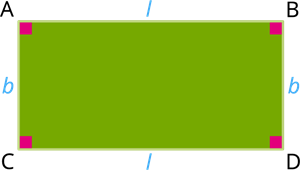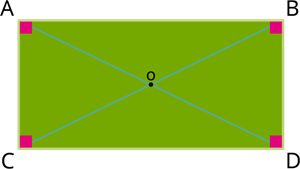UPSKILL MATH PLUS
Learn Mathematics through our AI based learning portal with the support of our Academic Experts!
Learn moreThe perimeter of a rectangle: The perimeter is the total distance around the outside, that can be created by adding together the length and the breadth of each side.

Let us consider a rectangle ABCD of length 'l' units and breadth 'b' units.
The perimeter of the rectangle is therefore as follows:
Perimeter(P) = (AB + BC + CD + DA) units.
P = ( l + b + l + b ) units.
P = (2l + 2b) units.
P = 2 (l + b) units.
Thus, the length of the rectangle given its perimeter is l = P/2 - b units.
And, the breadth of the rectangle given its perimeter is b = P/2 - l units.
Area of rectangle: The area of a rectangle is given by multiplying the length and the breadth.

Let us consider a rectangle ABCD of length 'l' units and breadth '(b\)' units.
Therefore, the area of the rectangle is as follows:
Area (A) = length l × breadth b.
Thus, the length of the rectangle given its area is l = A/b units.
And, the breadth of the rectangle given its area is b = A/l units.
Diagonals f rectangle: A rectangle has two diagonals they are equal in length and intersect in the middle. The diagonal is the square root of (length squared + breadth squared).

Diagonal (d) = .
Where 'l' and 'b' is the length and breadth of the rectangle.